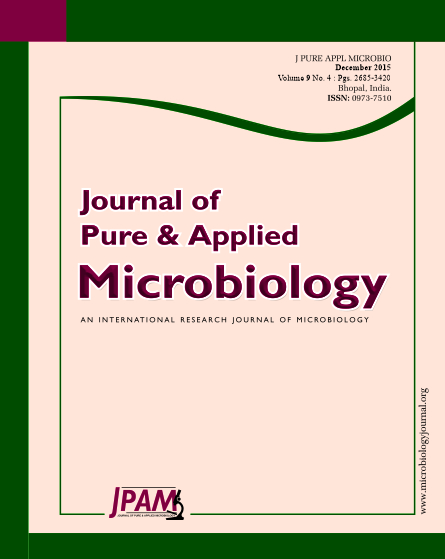The volatile monoaromatic hydrocarbons BTEX have been termed and considered as environmental pollutants. In this study, the significance of bacterial isolates in biodegradation of Benzene, Toluene, Ethyl benzene and o-Xylene (individually) were analysed. Seven different isolates were isolated from two different sources namely petroleum effluent and petroleum contaminated soil. After initial characterization of these isolates the growth pattern of them with BTEX as sole carbon source was carried out and the degradation potential were studied. The isolate Bacillus pumilus MVSV3 was identified and found to be effective degrader of BTEX. When 50 mg/L of BTEX was supplemented individually, Bacillus pumilus MVSV3 showed 56% of benzene, 59% of toluene, 55% of ethylbenzene and 54% of o-Xylene degradation. The bacterial isolate had potential to tolerate different metal ion concentration (0.5-0.25 mM) and varying percentage of salinity (2-10 %). The GCMS studies revealed that it could degrade BTEX into catechol and muconic acid, which are the major intermetabolites formed during an ortho pathway mediated degradation of monoaromatic hydrocarbons. These observations indicated that this strain has a good potential for degrading BTEX and could contribute significantly to biodegradation of monoaromatic compounds.
BTEX; Bacillus pumilus; Logistic growth; Scanning Electron Microscope; HPLC, GCMS.
© The Author(s) 2015. Open Access. This article is distributed under the terms of the Creative Commons Attribution 4.0 International License which permits unrestricted use, sharing, distribution, and reproduction in any medium, provided you give appropriate credit to the original author(s) and the source, provide a link to the Creative Commons license, and indicate if changes were made.


